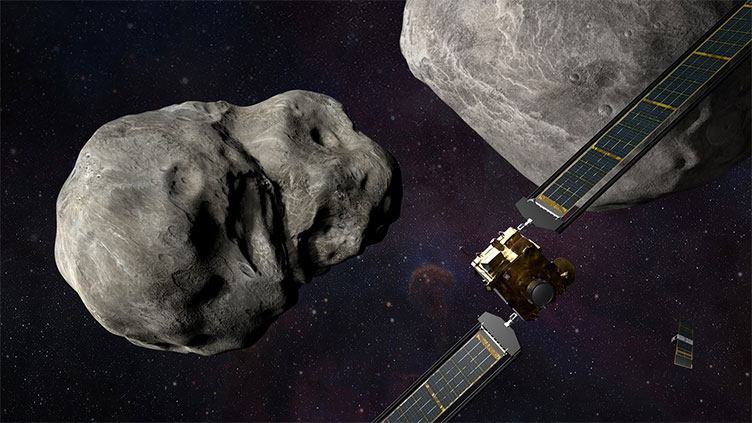"We're Embarking on a New Era," says NASA Director Glaze...
NASA celebrates the succeeding in a historic test of humanity's ability to prevent a celestial object from devastating life on Earth on Monday, Bullseye: A NASA spaceship struck an asteroid seven million miles away to deflect its orbit.
The Double Asteroid Redirection Test (DART) impactor hit its target, the space rock Dimorphos, at 7:14 pm Eastern Time (2314 GMT), ten months after blasting off from California on its pioneering mission.
While taking Twitter, the Director of NASA's planetary science division, Lori Glaze, wrote: "We're embarking on a new era, an era in which we potentially can protect ourselves from something like a dangerous hazardous asteroid impact."
According to the reports, Dimorphos is a 530-foot (160-metre) asteroid roughly comparable in size to an Egyptian pyramid and its orbits a half-mile-long big brother called Didymos. Never seen before, the "moonlet" appeared as a speck of light around an hour before the collision.
Its egg-like shape and craggy, boulder-dotted surface finally came into clear view in the last few minutes as DART raced toward it at roughly 14,500 miles (23,500 kilometres) per hour.
NASA scientists and engineers erupted in applause as the screen froze on a final image, indicating that signal had been lost and impact had taken place.
Exactly, the pair of asteroids pose no threat to our planet as they loop the Sun every two of our years.
However, NASA has deemed the experiment important to carry out before an actual need is discovered.
By striking Dimorphos head-on, NASA hopes to push it into a smaller orbit, shaving 10 minutes off the time it takes to encircle Didymos, which is currently 11 hours and 55 minutes.





The Brief. Sign up to receive the top stories you need to know right now.